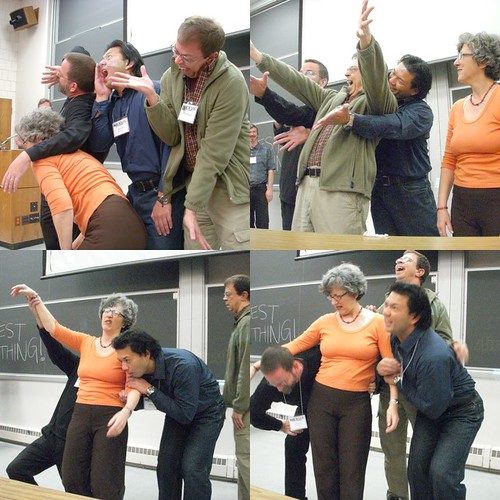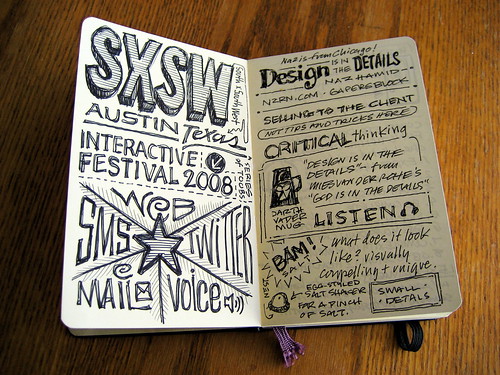Last week at Nexus for Change 2 we had an evening of the arts for change. We had Playback Theatre from our full arts team (who recruited me – that was fun! You can see some video clips here, here and here), juggling from the amazing Tom Sparough and song from Timothy C. Van Ness and we even drew together. Taking an idea from Johnnie Moore, we did a pairs drawing exercise, continuing on my inquiry into visual expression as a mode of interaction and learning together. Here is a short video of one pair drawing together.
YouTube – Drawing Together Exercise
Here are some of the beautiful faces they drew together:

You can see the pictures more clearly in the Nexus set on Flickr.
And some stills from Playback Theatre

Peter Block made an observation on Tuesday that really hit home for me. He said something to the effect that we resist change done unto us, but we embrace change that helps us stay who we are. Somewhat paradoxically, it is in the preservation of self that we embrace change.
So does change always have to be serious and gut wrenching? Or can we play, singe and draw our way through transformation? I think we can. And perhaps we MUST!
For more on Nexus, see our wiki.
More videos here.


 Bill Anderson adds to the repetoire of conference capture techniques with Haiku Notes from SXSW
Bill Anderson adds to the repetoire of conference capture techniques with Haiku Notes from SXSW